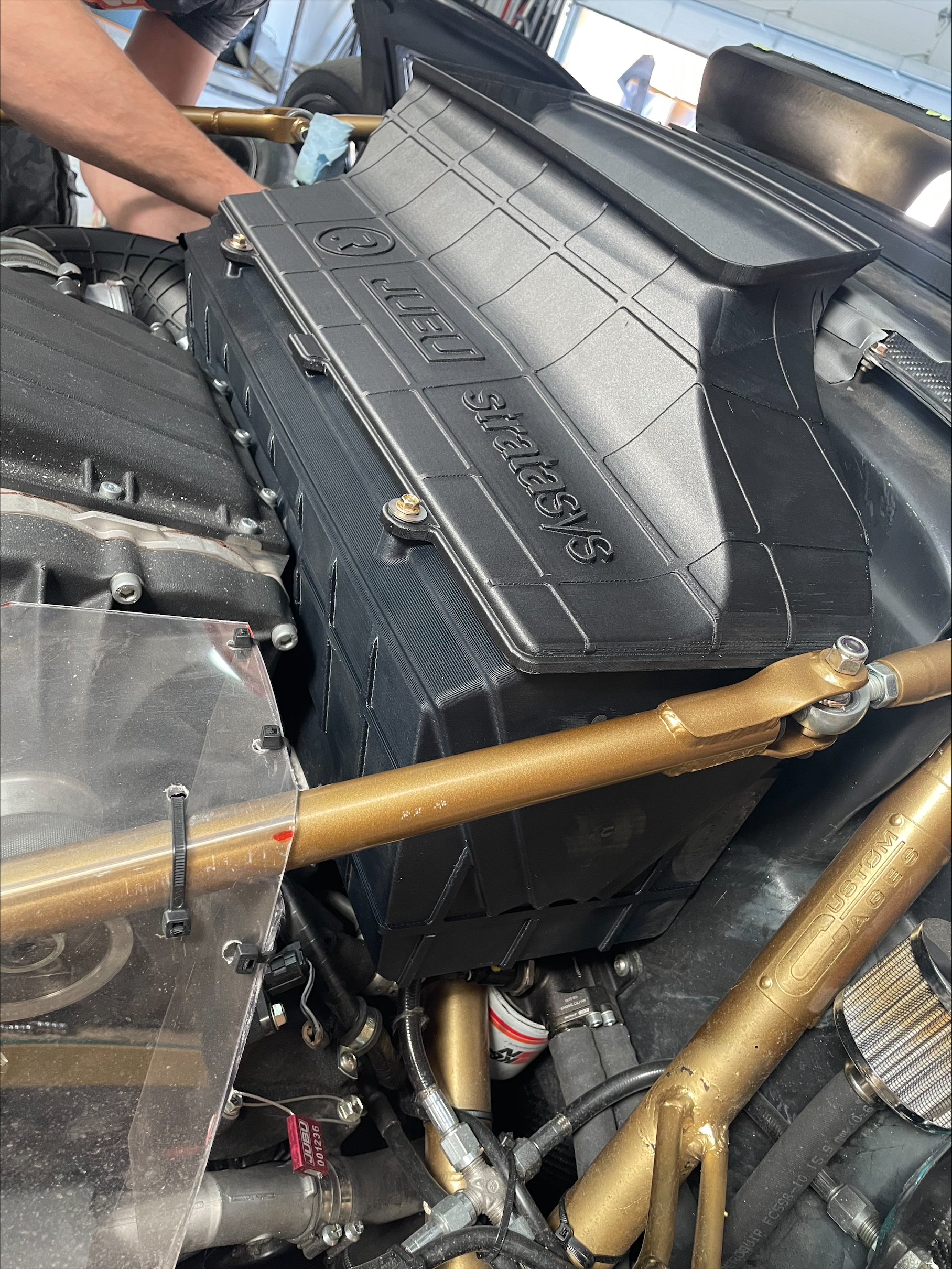Radford Race Car Mounts Pikes Peak With 3D Printed Parts in Tow
The Radford Type 62-2 includes 3D printed fenders, brake ducts, and radiator cooling ducts, among other parts.

The Radford Type 62-2 Pike’s Peak Edition race car features more than 70 Stratasys 3D printed parts. Image Courtesy of Stratasys
Latest News
July 4, 2023
The Broadmoor Pike’s Peak International Hill Climb, also known as The Race to the Clouds, attracts the best drivers from around the world, all consumed with conquering the challenging course which spans 12.42 miles and 156 corners, including 19 hairpin turns.
At this year’s 101st running of the race in Colorado Springs, CO, 3D printing was also in the driver’s seat. Radford Motors partnered with Stratasys to retrofit its Radford Type 62-2 Pike’s Peak Edition vehicle with more than 70 3D printed parts, helping it achieve unrivaled performance to take the win in the Exhibition class and be ranked as 8th overall fastest. Driver Tanner Foust clocked the impressive time of 09:37.326.
Given the extreme conditions of the race, the Radford Motors team was fixated on designing a car that could accelerate fast for the short straightaways, have an ability to brake quickly, and navigate hair-pin turns. The altitude and road conditions also put significant stress on the car frame and engine, underscoring the need for high-quality, lightweight parts that could stand up to the challenge.
3D printing parts such as fenders, brake ducts, and radiator cooling ducts enabled significant lightweighting. The Radford Type 62.2 Pike’s Peak Edition, with a 3.5L V6 engine, weighs only 1,900 pounds, yet generates 710 horsepower—a combination that allows the vehicle to accelerate from 0 to 60 miles per hour in under 2.2 seconds with a top speed of 160 mph. The car was built as a full carbon composite monocoque bolted on to new subframes while featuring new suspension geometry and a new underbody.
“Using so many 3D printed parts on the Type 62-2 gives Radford a serious competitive edge as it takes considerable weight off the car, thus improving its overall performance,” said Rich Garrity, chief industrial business officer at Stratasys, in a press release. “The 3D printed parts are also stronger and more resilient, and if something does happen to a part during testing or a practice run, they can recreate that part much faster than a traditionally manufactured part.”
The Radford Type 62.2 parts were made by Stratasys in its Eden Prairie, MN headquarters using the company’s H350, F900, F770, 450mc and F370 family of printers. Stratasys was also responsible for creating the prototype bodywork and tooling for the Type 62-2.
Watch this video to see Radford driver Tanner Foust bust out of the starting gates at this year’s Pike’s Peak race held in June.
More Stratasys Coverage
Subscribe to our FREE magazine, FREE email newsletters or both!
Latest News
About the Author
Beth Stackpole is a contributing editor to Digital Engineering. Send e-mail about this article to DE-Editors@digitaleng.news.
Follow DE





